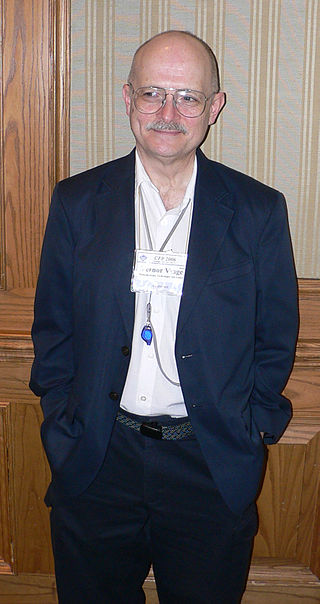
Vernor Steffen Vinge is an American science fiction author and retired professor. He taught mathematics and computer science at San Diego State University. He is the first wide-scale popularizer of the technological singularity concept and among the first authors to present a fictional "cyberspace". He has won the Hugo Award for his novels A Fire Upon the Deep (1992), A Deepness in the Sky (1999), Rainbows End (2006), and novellas Fast Times at Fairmont High (2002), and The Cookie Monster (2004).

Gregory Benford is an American science fiction author and astrophysicist who is professor emeritus at the department of physics and astronomy at the University of California, Irvine. He is a contributing editor of Reason magazine.

Alastair Preston Reynolds is a British science fiction author. He specialises in hard science fiction and space opera. He spent his early years in Cornwall, moved back to Wales before going to Newcastle University, where he studied physics and astronomy. Afterwards, he earned a PhD in astrophysics from the University of St Andrews. In 1991, he moved to Noordwijk in the Netherlands where he met his wife Josette. There, he worked for the European Space Research and Technology Centre until 2004 when he left to pursue writing full-time. He returned to Wales in 2008 and lives near Cardiff.

The John W. Campbell Memorial Award for Best Science Fiction Novel, or Campbell Memorial Award, was an annual award presented to the author of the best science fiction novel published in English in the preceding calendar year. It was given by several organizations from 1973-1979 and then by the Center for the Study of Science Fiction at the University of Kansas until 2019. It was the novel counterpart of the Theodore Sturgeon Award for best short story, awarded at the same conference by the Theodore Sturgeon Literary Trust. The award was named in honor of John W. Campbell (1910–1971), whose science fiction writing and role as editor of Analog Science Fiction and Fact made him one of the most influential editors in the early history of science fiction. The award was established in 1973 by writers and critics Harry Harrison and Brian Aldiss "as a way of continuing his efforts to encourage writers to produce their best possible work." Locus magazine listed it as one of the "major awards" of written science fiction.
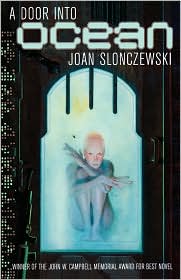
A Door into Ocean is a 1986 feminist science fiction novel by Joan Slonczewski. The novel's themes include ecofeminism and nonviolent revolution, as well as Slonczewski's own knowledge in the field of biology.
Anaerobic respiration is respiration using electron acceptors other than molecular oxygen (O2). Although oxygen is not the final electron acceptor, the process still uses a respiratory electron transport chain.

Joan D. Vinge is an American science fiction author. She is known for such works as her Hugo Award–winning novel The Snow Queen and its sequels, her series about the telepath named Cat, and her Heaven's Chronicles books. She also is the author of The Random House Book of Greek Myths (1999).
George Reginald Turner was an Australian writer and critic, best known for the science fiction novels written in the later part of his career. His first science fiction story and novel appeared in 1978, when he was in his early sixties. By this point, however, he had already achieved success as a mainstream novelist, including a Miles Franklin Award, and as a literary critic.

Lilith's Brood is a collection of three works by Octavia E. Butler. The three volumes of this science fiction series were previously collected in the now out-of-print omnibus edition Xenogenesis. The collection was first published under the current title of Lilith's Brood in 2000.

Campylobacterota are a phylum of bacteria. All species of this phylum are Gram-negative.
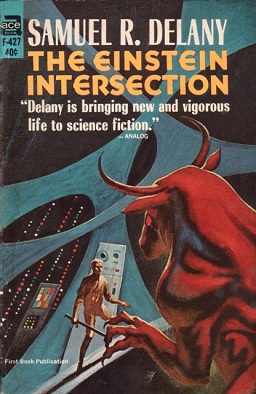
The Einstein Intersection is a 1967 science fiction novel by Samuel R. Delany. The title is a reference to Einstein's Theory of Relativity connecting to Kurt Gödel's Constructible universe, which is an analogy to science meeting philosophy. Delany's intended title for the book was A Fabulous, Formless Darkness.
Molecular Koch's postulates are a set of experimental criteria that must be satisfied to show that a gene found in a pathogenic microorganism encodes a product that contributes to the disease caused by the pathogen. Genes that satisfy molecular Koch's postulates are often referred to as virulence factors. The postulates were formulated by the microbiologist Stanley Falkow in 1988 and are based on Koch's postulates.
Diversicon is an annual speculative fiction convention held in July or August in the Minneapolis-Saint Paul, Minnesota area. Diversicon provides programming and social opportunities to encourage the multicultural, multimedia exploration and celebration of SF by those within and outside of the traditional SF community. Diversicon includes both live and posthumous guests. It is sponsored by SF Minnesota.
A relatively common motif in speculative fiction is the existence of single-gender worlds or single-sex societies. These fictional societies have long been one of the primary ways to explore implications of gender and gender-differences in science fiction and fantasy. Many of these predate a widespread distinction between gender and sex and conflate the two.

The Windup Girl is a biopunk science fiction novel by American writer Paolo Bacigalupi. It was his debut novel and was published by Night Shade Books on September 1, 2009. The novel is set in a future Thailand and covers a number of contemporary issues such as global warming and biotechnology.

Grass is a 1989 science fiction novel by Sheri S. Tepper and the first novel from the Arbai trilogy. Styled as an ecological mystery, Grass presents one of Tepper's earliest and perhaps most radical statements on themes that would come to dominate her fiction, in which despoliation of the planet is explicitly linked to gender and social inequalities.
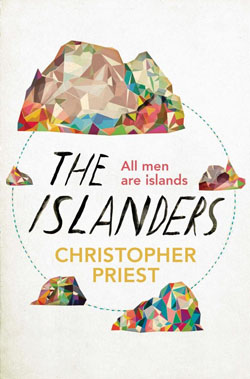
The Islanders is a 2011 science fiction novel by British writer Christopher Priest.
Legends and speculative fiction reveal a longstanding human fascination with rolling and wheeled creatures. Such creatures appear in mythologies from Europe, Japan, pre-Columbian Mexico, the United States, and Australia, and in numerous modern works.
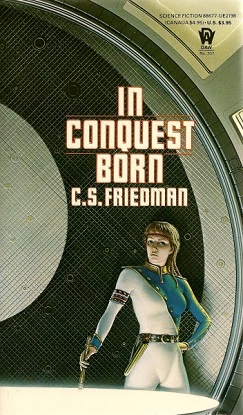
In Conquest Born is a 1986 science fiction novel by American author C. S. Friedman, which was nominated for the John W. Campbell Award for Best New Writer in 1988. The novel blends elements of space opera, anthropological science fiction, and military science fiction. The story takes place in the distant future where two societies of humans, the Azeans and Braxins, vie for control of their proximate interstellar territory, each using its distinctive talents and abilities.
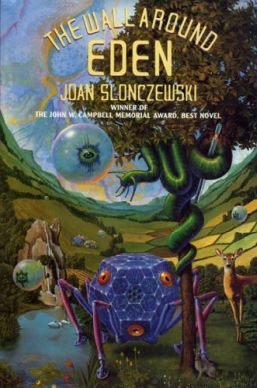
The Wall Around Eden is a 1989 post-apocalyptic science fiction novel by American microbiologist and science fiction writer Joan Slonczewski. It was first published in the United States in September 1989 by William Morrow and Company, and in the United Kingdom by The Women's Press in March 1991. It was translated into Italian and published by Editrice Nord as Le mura dell'Eden in May 1991.













